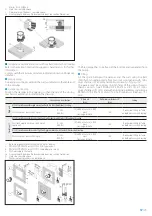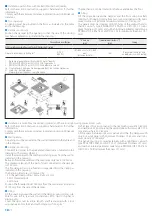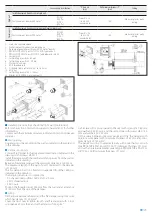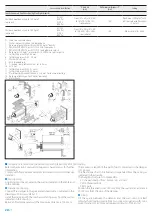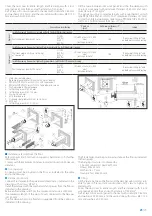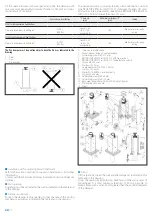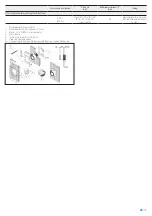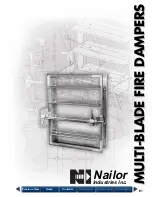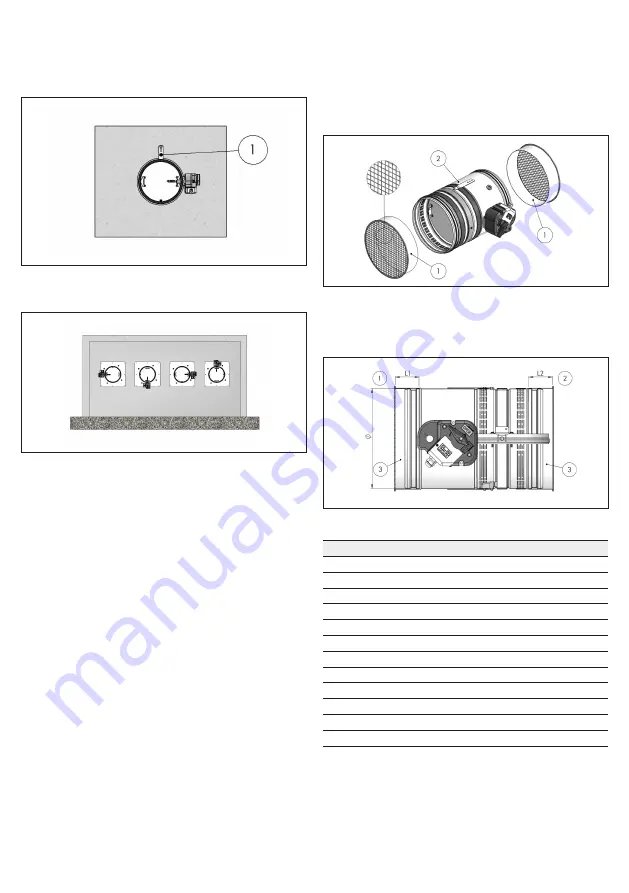
10
/23
It is recommended to perform a functional test before Installation to
exclude possible damage during transport and another test immedi-
ately after installation to exclude accidental damage to the product
and interference with mounting components.
Positioning brackets before fixing
1. Positioning brackets
Blade rotation axis positioning
The fire damper can be installed with the blade axis positioned verti-
cally or horizontally or tilted at any angle.
Installation of flexible connectors in order to balance out the
ventilation ducts expansion
CAUTION: Refer anyway to law and national standardization.
Flexible connectors compensate any duct thermal expansion and
wall bending in case of fire.
Flexible connectors are used to limit fire damper stresses due to ex-
ternal forces in case of fire and to preserve fire resistance class.
In general it is always appropriate the use of flexible connectors for
the followings installations:
– light walls;
– Plasterboard and rock wool or Fire Batt (Weichschott) sealing;
– Applique fixing system.
Flexible connector must be normal flammability and in case of fire
the grounding bonding should disconnet to guarantee the com-
plete separation between fire damper and connected air duct.
When flexible connectors made of conductive material (e.g. alumi-
num) are used, no additional grounding bonding is required.
Despite flexible connector installation, the fire damper must be in-
stalled in the construction support so that its weight does not affect
damper’s installation position both during normal operation and in
case of fire.
It is recommended not to compress flexible connectors in the in-
stallation phase.
Flexible connector must be at least 100mm long and in order that
possible duct thermal expansions are balanced.
Take care that the flexible connector does not interfer with opening
/ closing movement of the blade.
Transfer Application (application not connected to air ducts on
one or both sides)
Following tests performed as per EN 1366-2, section 6.3.6 Standard,
it is possible to install the fire damper free from air duct from one or
both sides.
• Attention: fire resistance classification for transfer application is
conform to section Fire resistance classification according to EN
13501-3-2009 limited to EI 120S if the ducted classification is high-
er.
• End cap with mesh shall be mounted on the side not connected
to air duct.
• End cap with mesh is made from galvanized steel sheet.
• End cap with mesh is supplied loose from the fire damper.
Components (Transfer Application)
1. End cap with mesh (to fix to fire
damper with steel screws)
2. Fire damper
Technical data (Transfer Application)
1. Mechanism side
2. Mechanism opposite side
3. End cap with mesh
L1 End cap length mechanism side
L2 End cap length mechanism
opposite side
Ø Fire damper nominal diameter
Length of end cap with mesh depending on fire damper di-
ameter Ø.
Ø
L1
L2
100
40
40
125
40
40
140
40
40
150
40
40
160
40
40
180
40
40
200
40
60
224
40
40
250
60
80
280
60
100
300
60
100
315
60
120
Ø
Fire damper nominal diameter
L1
End cap length mechanism side
L2
End cap length mechanism opposite side
Minimum distances
It is recommended to keep enough space for using the control
mechanism or for maintenance.
In accordance with Articles 7 and 13 of EN 1366-2 respect the mini-
mum distances indicated below.

















